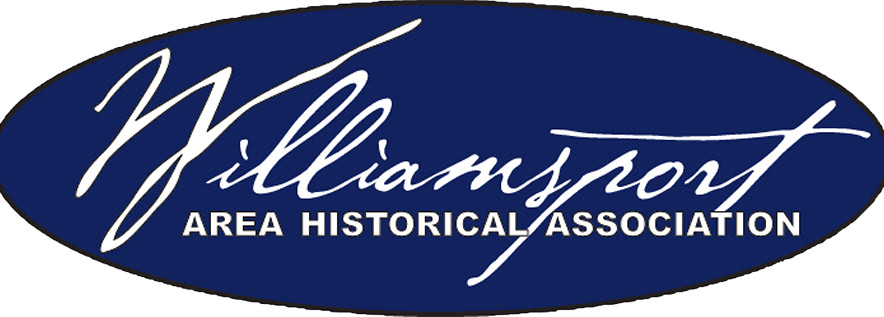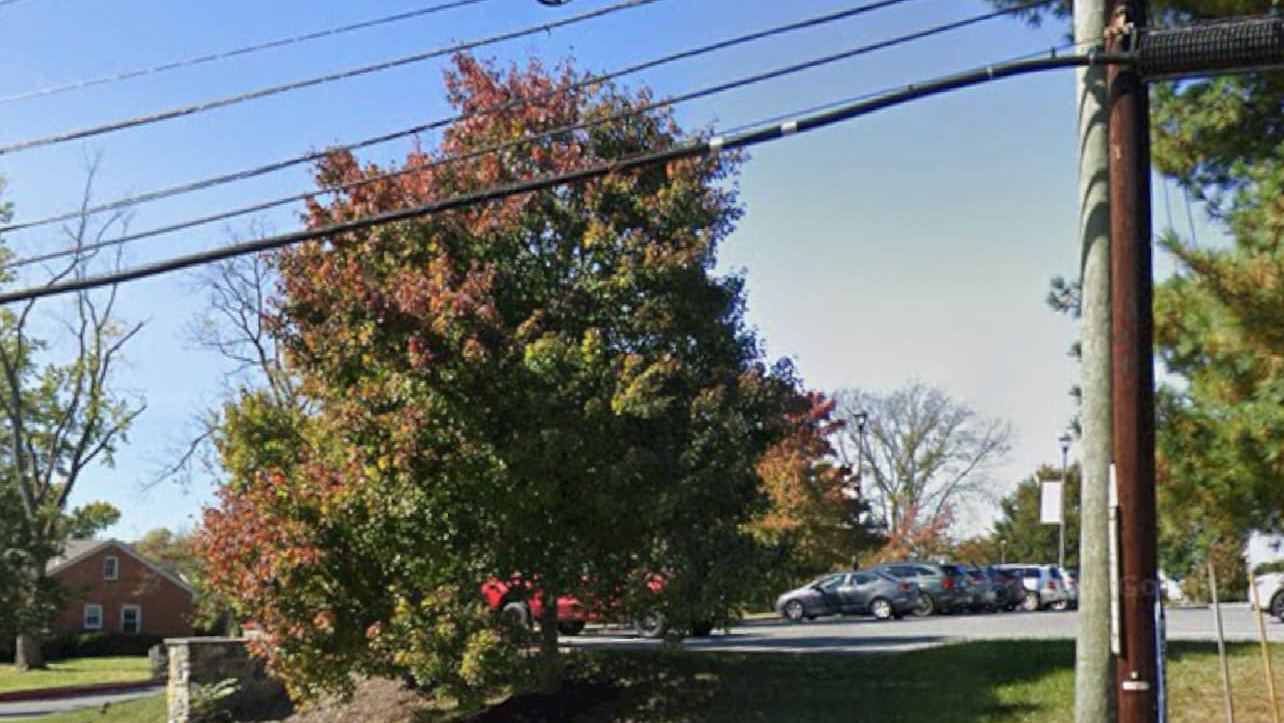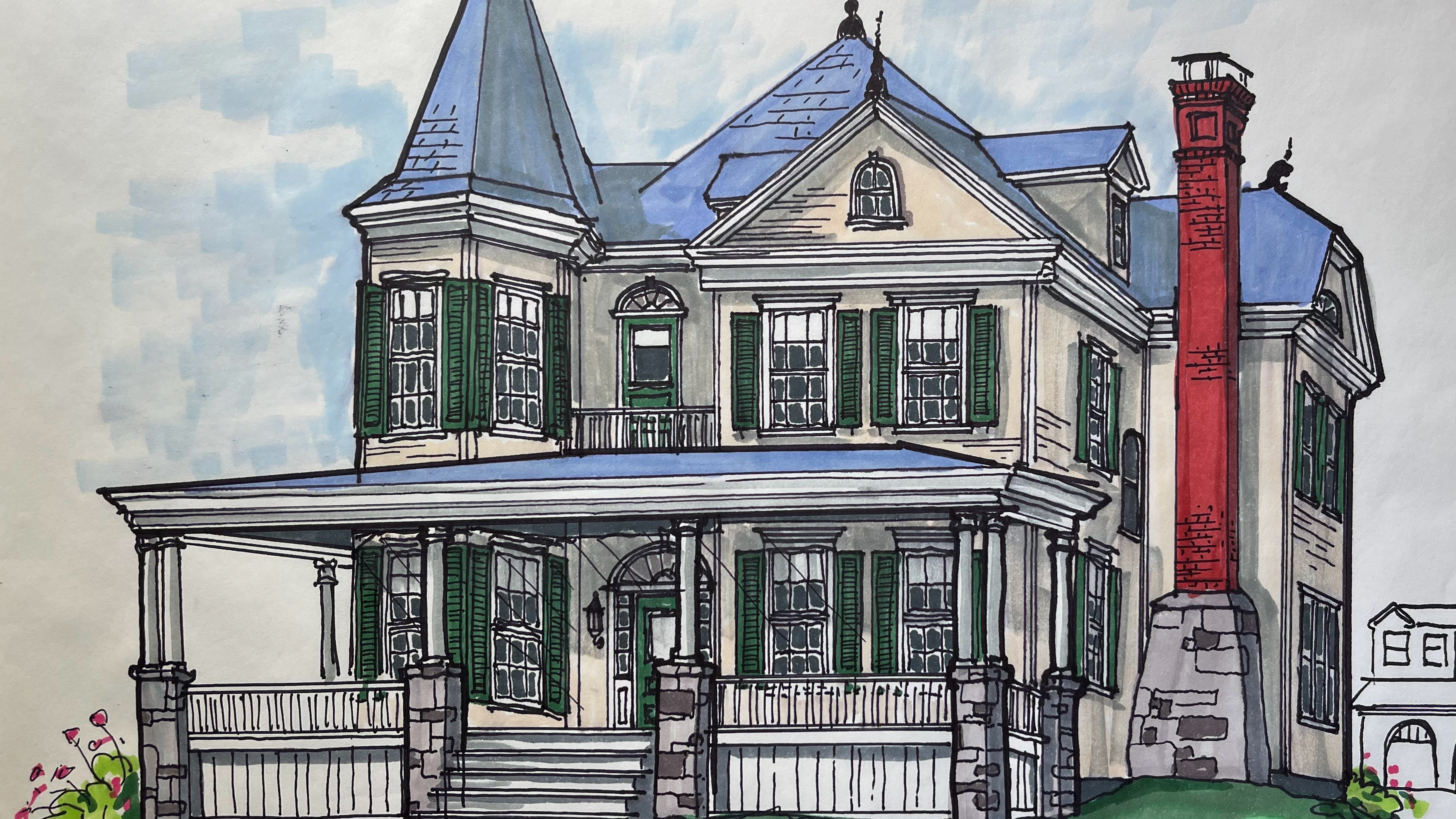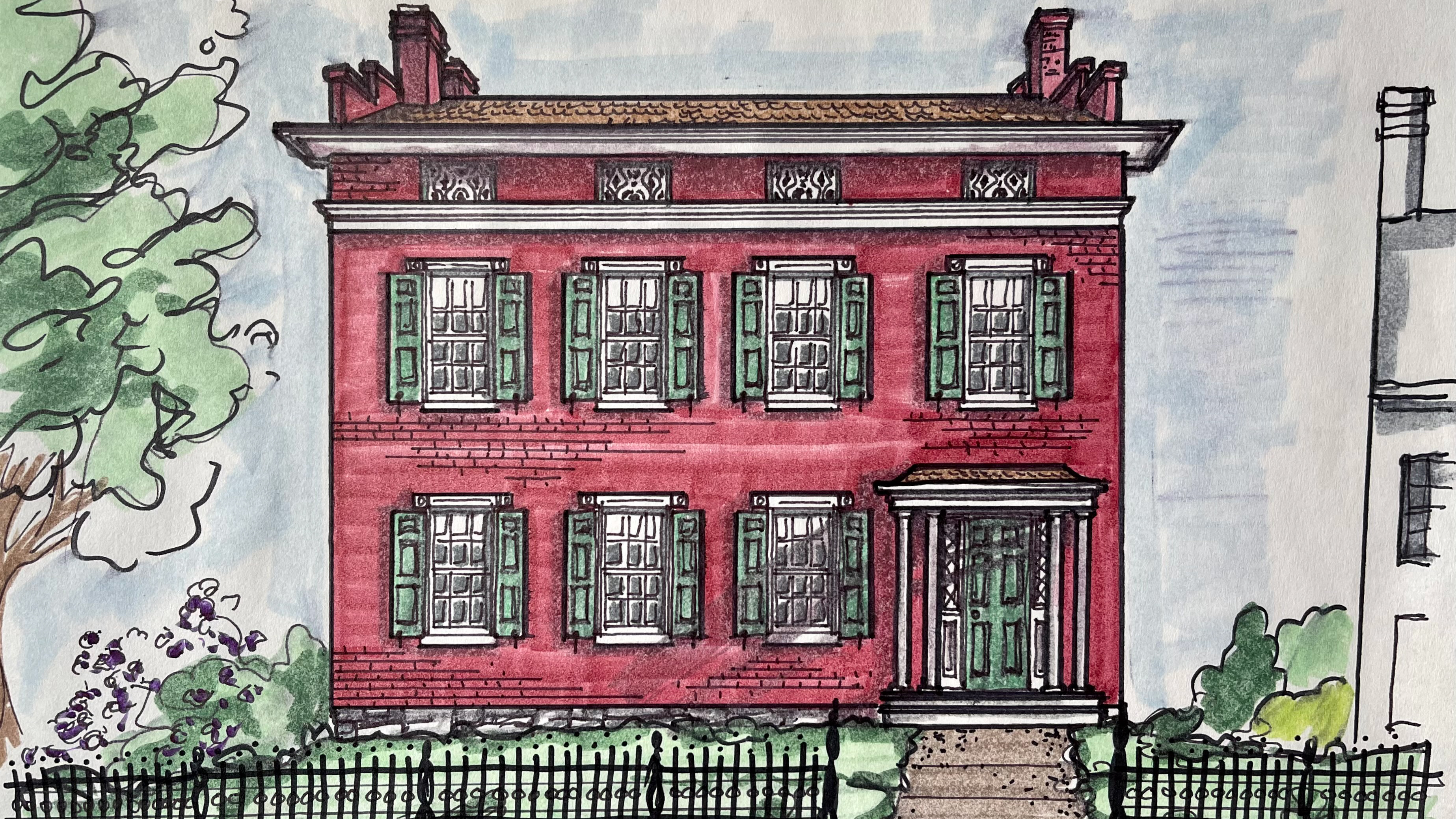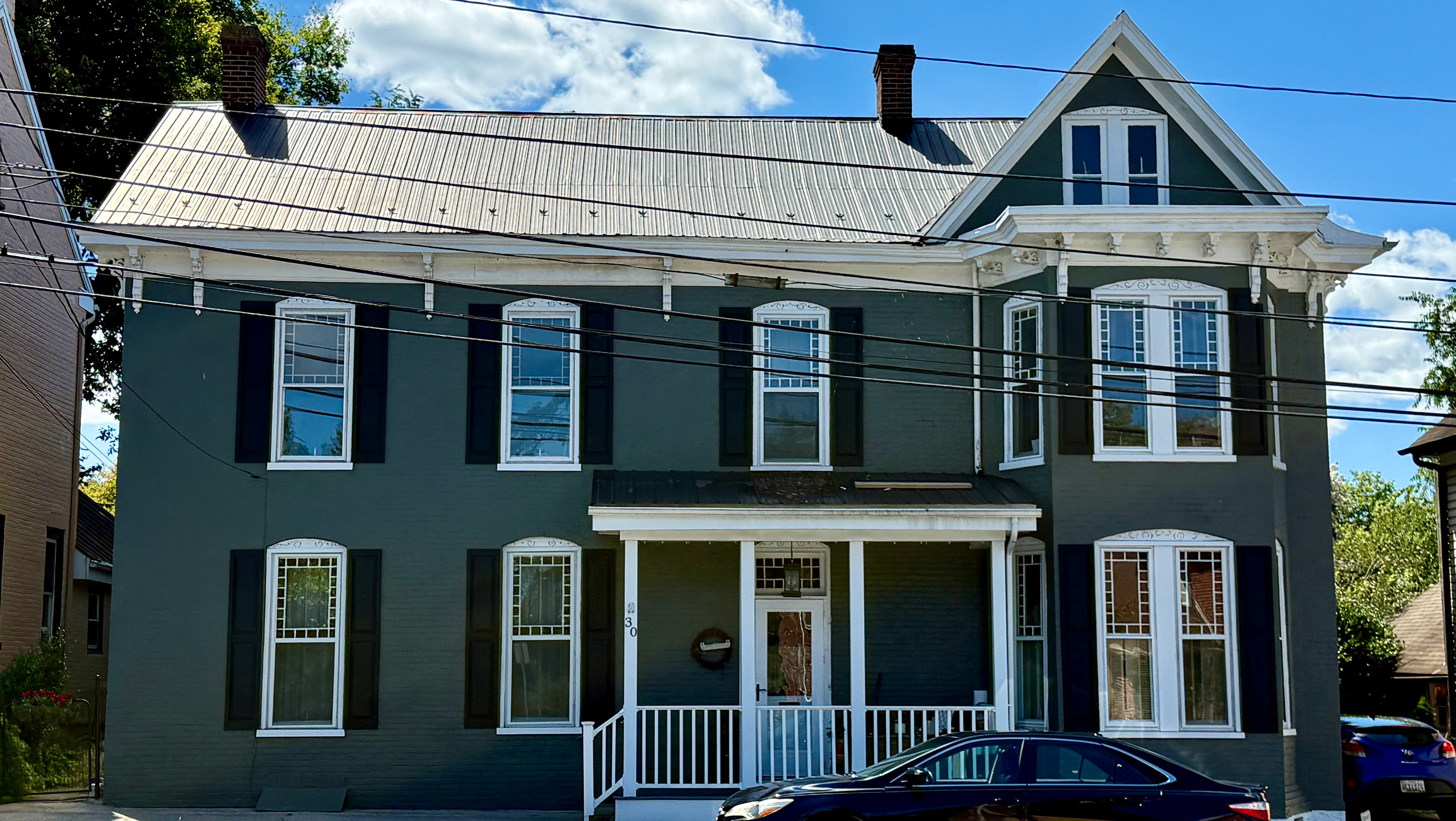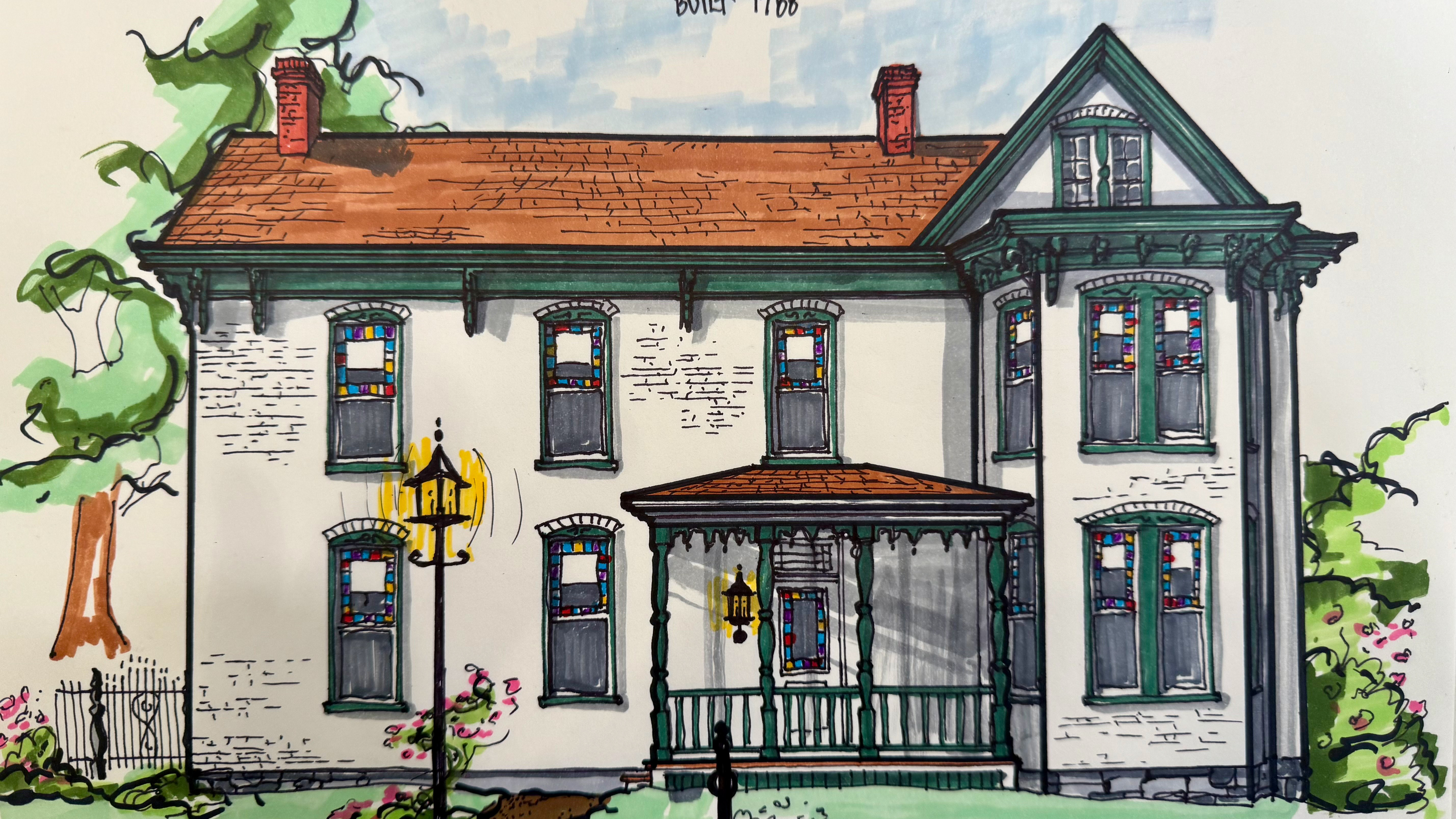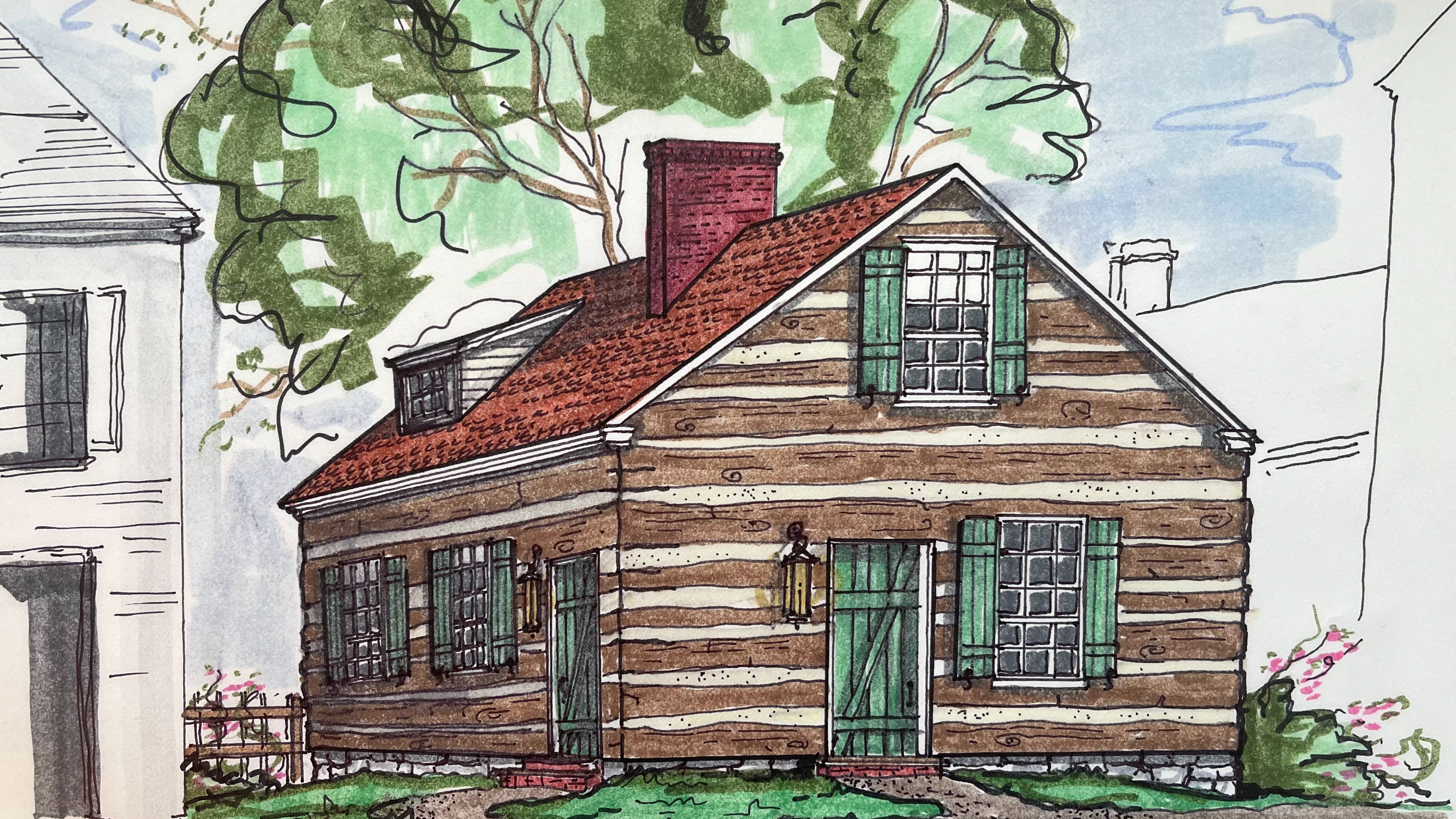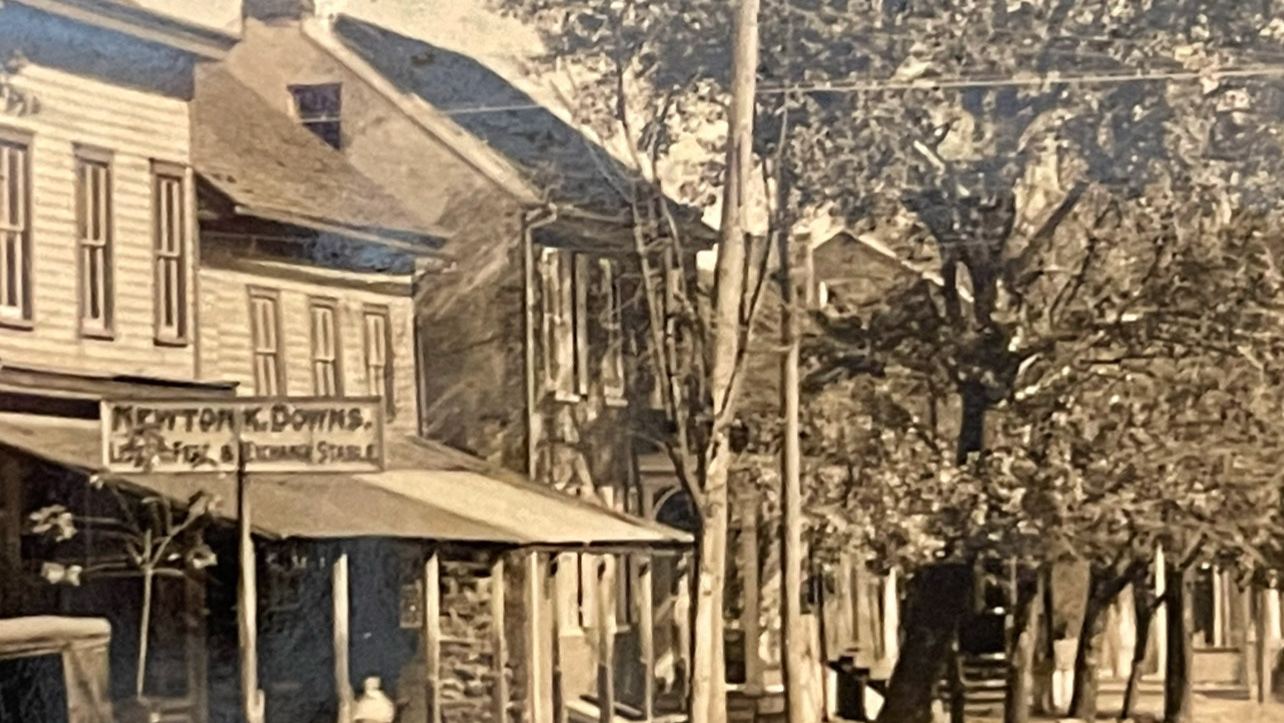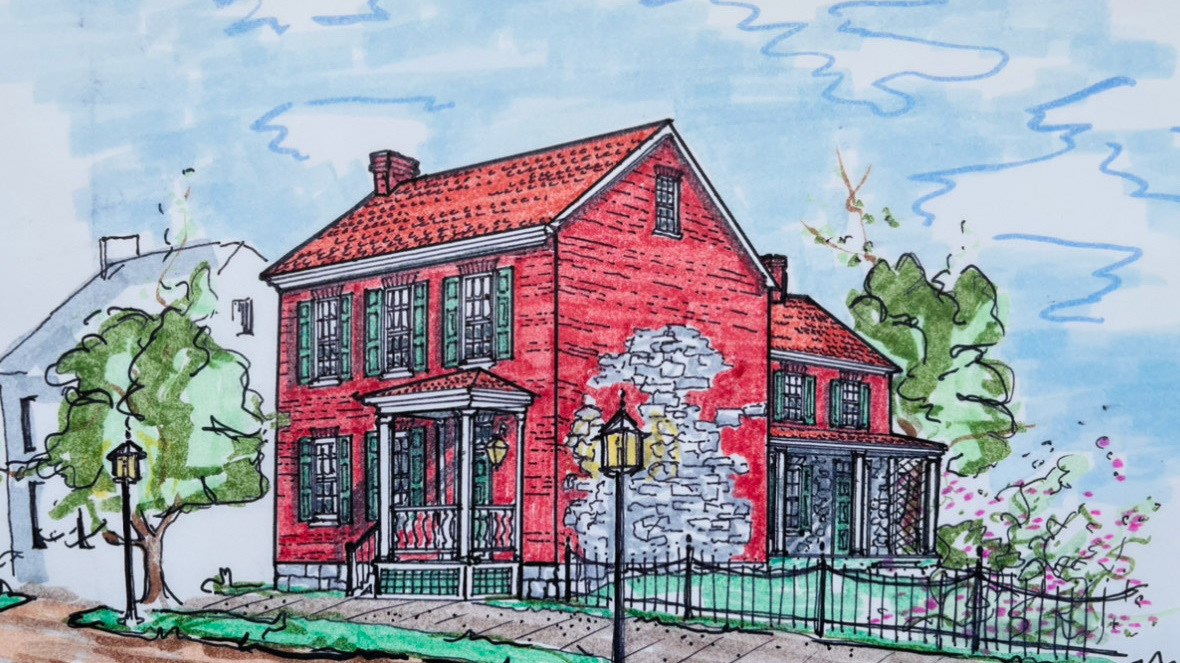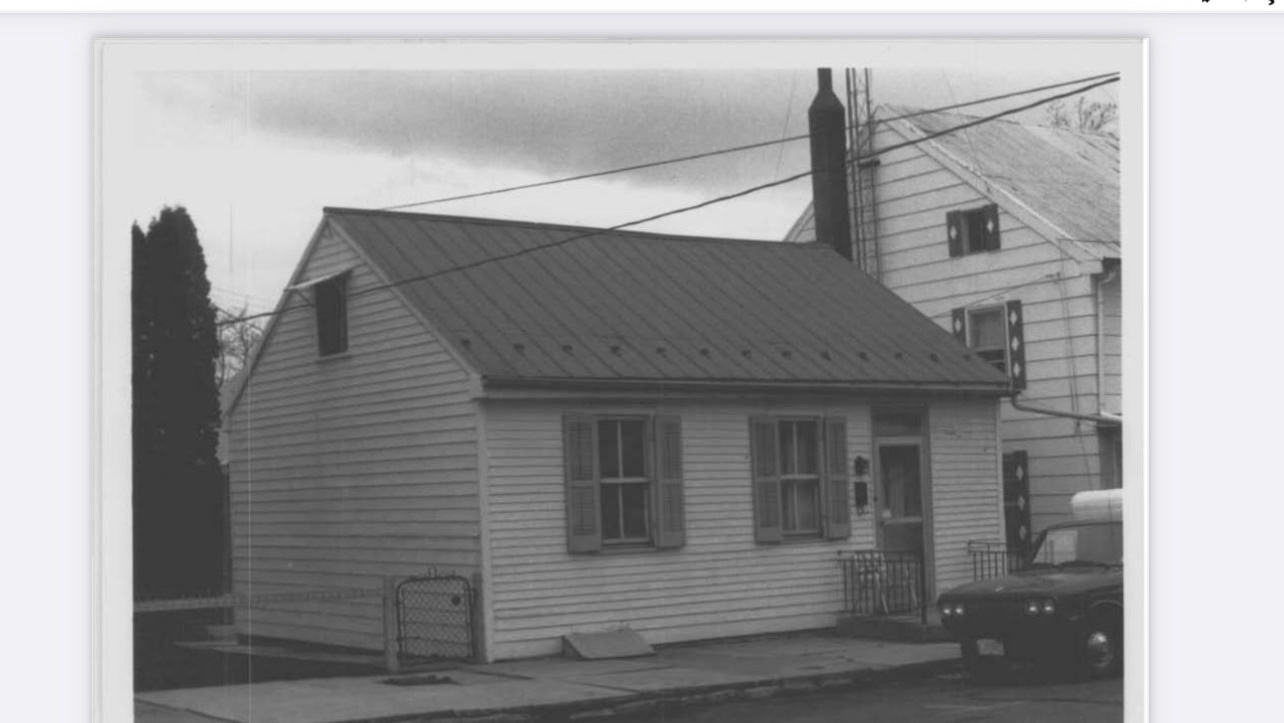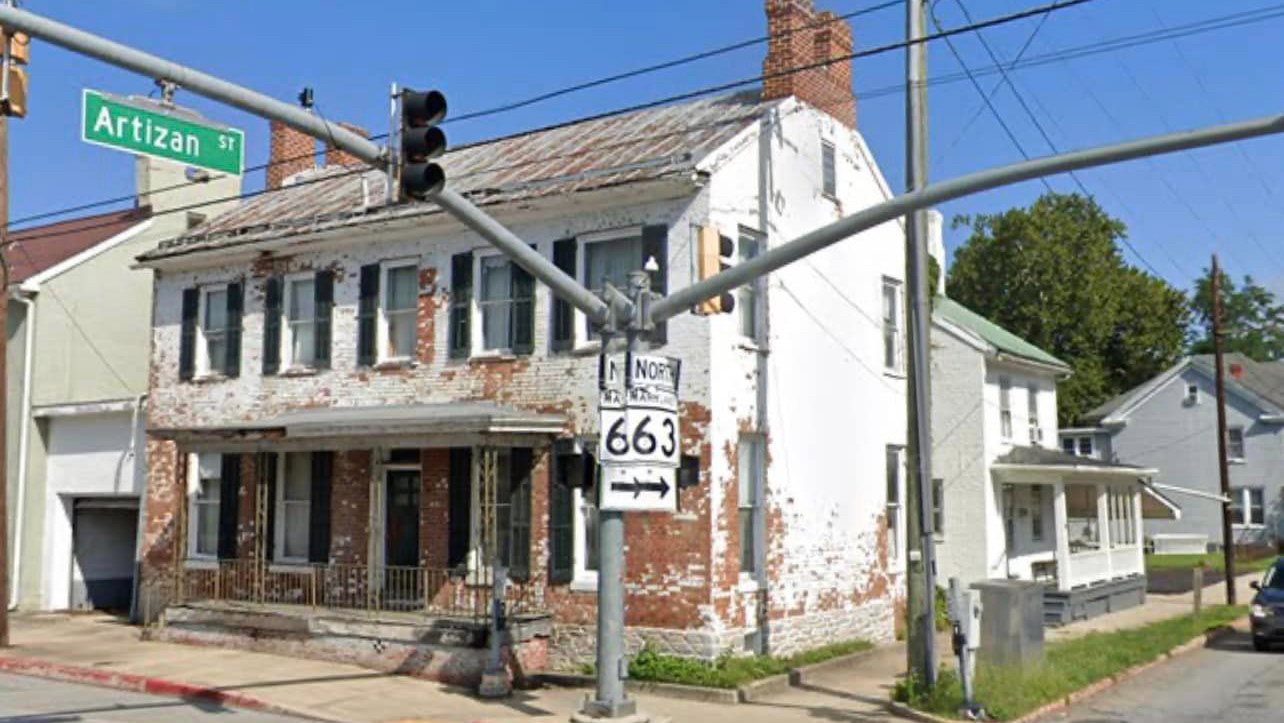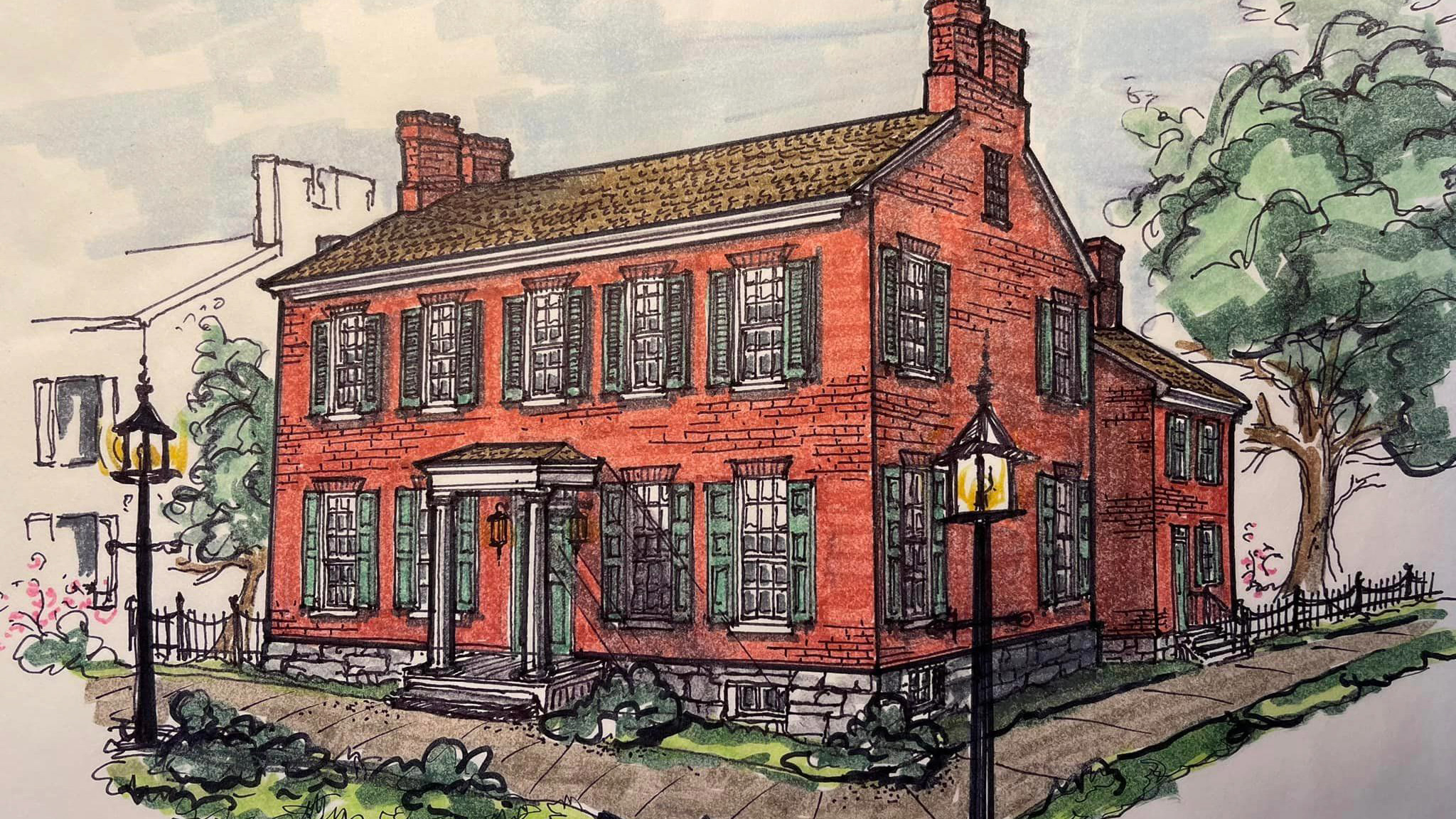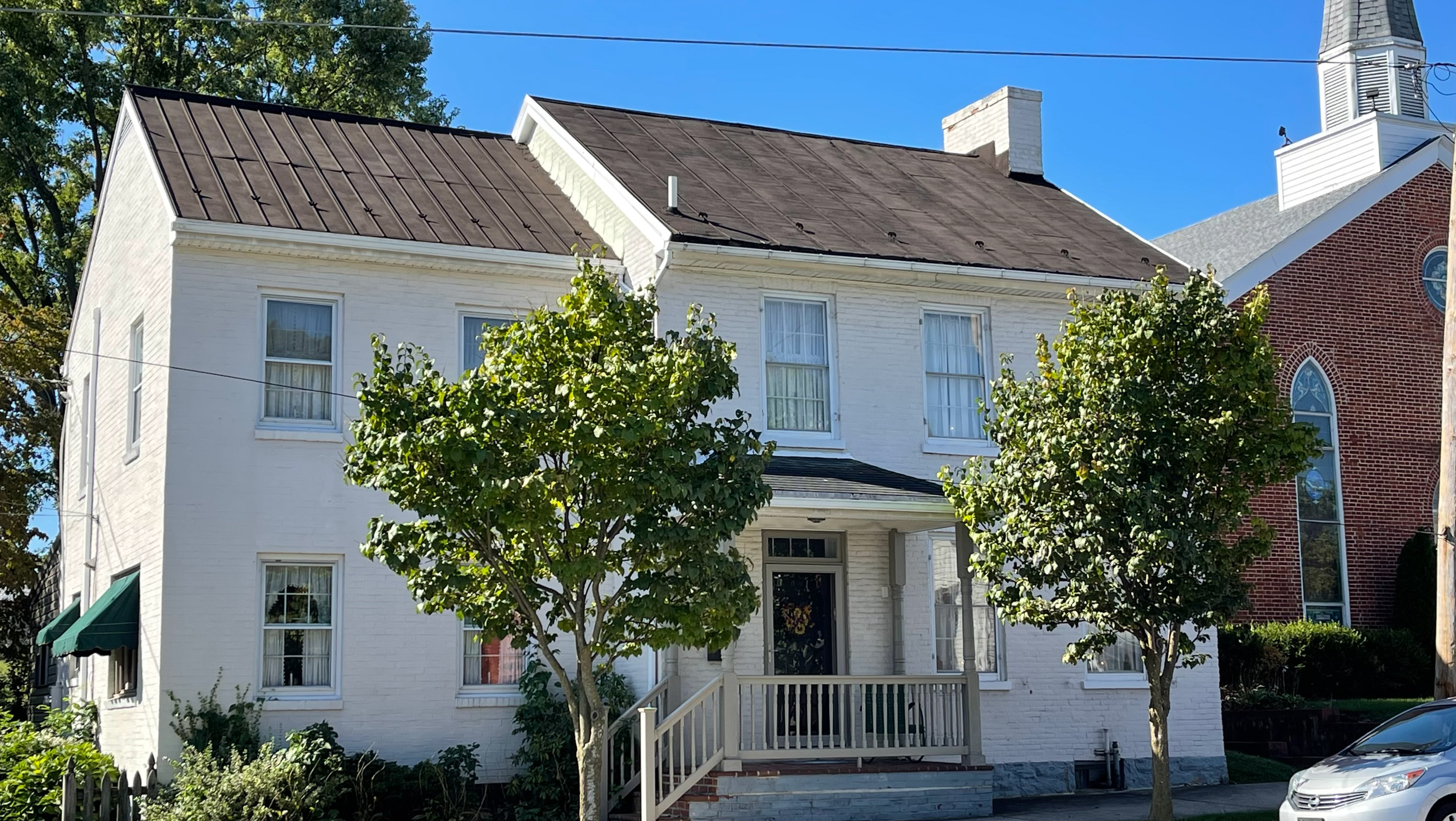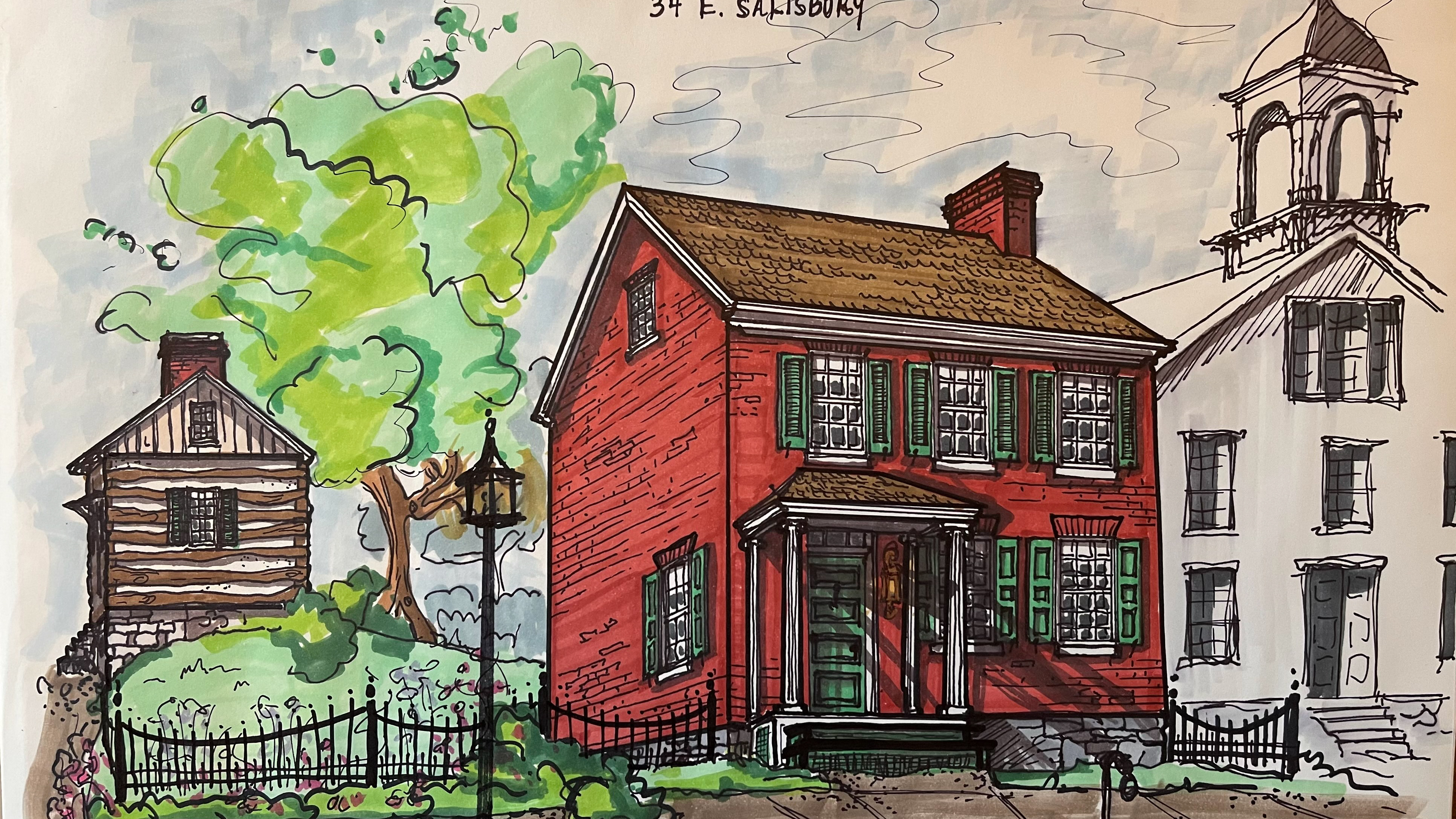For over fifty years the Byron Family was a manufacturing, and later political dynasty in Williamsport. Three Byrons served as mayor of Williamsport, W. D. Byron 1908-1912, W. D. Byron II 1926-1930, and James E. Byron 1961-1965. For nearly thirty years, four members of the family served in the United States Congress, dubbing their congressional position “The Byron Seat.” Katherine Edgar Byron, widow of Congressman William Devereux Byron II was the first woman ever elected from Maryland to congress from 1941-1943 assuming her husband William’s seat after his tragic death in an airplane crash in Georgia. Later Beverly Byron also assumed her husband's congressional when Goodloe Byron died from a heart attack one month before the election.
The Byrons had a large impact on the architectural face of Williamsport building several of the more important structures in the town. Sadly, one of their finest homes known as the "Bungalow" was demolished for a parking lot in the 1990s.
1910 Photo of the tannery. The Lutheran Church began construction of the new church in 1911. The Byrons were living in the former Weisel home.
The Massachusetts Byron leather manufacturing family expanded their operations to Mercersburg, Pennsylvania, and in 1897 to Williamsport. Although William Deveraux (WD) Byron is considered the founder of the tannery, the founding firm of W. D. Byron Tannery consisted of many Byron family members including William D.Byron and his wife Hattie, Edward Byron and his wife Nettie, William C. Byron, and later Joseph Byron.
The family first rented a home in Williamsport. In 1898, Edward and Nettie Byron purchased land at the top of the hill on N. Artizan Street and constructed a large Victorian-style home. Members of the Byron family would own and live in the home until 1947 when it was sold and converted into the Williamsport Sanitarium and Rest Home - today's Williamsport Retirement Village.
In January of 1899, Harriet Byron paid the outstanding price of $3,000 for lots 209 and 210 on W. Potomac Street next to the Zion Luthern Church. The two lots had been home to the Weisel family since the 1850s and overlooked the Conococheague Creek directly to the Byron tannery - probably the home they had been renting. The above 1910 photo shows a large two-story home with numerous outbuildings on the lots.
W.D. Byron and Harriet likely had immediate plans to build a home on the site, however, those plans were delayed when a fire destroyed the tannery in 1903. W. D. Byron immediately rebuilt his tannery, this time using brick for the main factory and offices.
Harriet died in December 1909, and in June 1910, William D. Byron transferred ownership of the two lots to the tannery corporation. Sometime after the transfer, he demolished the early Weisel home and built a modern Art & Crafts "bungalow."
A later news article noted the bungalow had 26 rooms, a ballroom, eight baths, garages, and a modern laundry "big enough to handle all the business of Williamsport." The grounds were landscaped with a green house, formal gardens, and pergolas.
Modern photo of the office at W. D. Byron Tannery
Although the architect of Byron's bungalow is not mentioned, it likely was Harry Yessler. The Byron family was very fond of the architect formerly of York, PA. One of Yessler's first commissions for the Byron family was the design and rebuilding of the Byron tannery after the 1903 fire. Yessler rebuilt the tannery buildings in brick, the main office building in a classic Georgian style complete with a cartouche of oak leaves. In 1908, Yessler designed the Pythian Castle on Conococheague Street in Williamsport where Byron was a founding member. Later that year Byron would donate the clock to the town that still sits atop the castle. In Hagerstown, Yessler designed a mansion on North Potomac Street for Lewis Byron, and in Mercersburg PA, Yessler designed a glorious home for Harry Winchester Byron that is today the Mercersburg Inn.
Left: The Lewis Byron residence on North Potomac Street, Hagerstown. Above: The Harry Byron home in Mercersburg, Pa. Harry Yessler, architect.
William D Byron was only able to enjoy his bungalow for a few years and died there in 1915. By 1920 his son Edward and wife Eleanor were living in the bungalow, William Cook Byron and Edith were in the Victorian house on N. Artizan and at least two other families of younger Byrons affiliated with the tannery were also living in Williamsport.
William Deveraux Byron, founder of the tannery in 1914 with his Packard
William Deveraux Byron circa 1914
In October of 1925, the directors of W. D. Byron, Inc. sold their interest in the property to William Deveraux Byron II and his wife, Katherine McComas Edgar Byron. The Byrons put $5,000 down, and the company held a mortgage for another $8,000.
William D. Byron II was the son of Major Joseph Byron, the younger brother of William D. Byron. William D. Byron II had married Katherine McComas Edgar, the granddaughter of Senator Louis McComas of Springfield Farm.
William D. Byron II was mayor of Williamsport from 1926 until 1930, then served in the Maryland Senate from 1930-1934. In 1939, he was elected to the U.S. House of Representatives from Maryland's 6 District.
The William D. Byron II years at the bungalow were certainly the hey-day for the home. Young, handsome, wealthy, and politically important, the Byrons raised five sons there: William D. Byron III, James Edgar Byron, Goodloe Edgar Byron, David Wilson Byron II, and Louis McComas Byron.
Images below from the Byron Collection, Hornbake Library, University of Maryland, College Park
Probably Katherine McComas Edgar Byron and one of her sons.
Young James Edgar Byron smiling over a festive party table as a servant serves punch
Note on reverse: Up over the garage, the recreation room fixed up as a "barn" Mexican style, 1937
In February of 1941, Representative Byron died in a plane crash in Clayton County, Georgia. His widow, Katherine Byron was elected to Congress in a special election held May 27, 1941 to replace her husband. She did not seek re-election in 1942 and retired in Washington DC. In August of 1942, the estate deeded the property to the heirs; David, Katherine, and Edgar Byron.
In December of 1942, Dr. Paul Fleming bought the mansion for $10,000 and converted the home into a hospital where he specialized in eye, ear, nose, and throat procedures.
Fleming was an affluent man and the newspaper carried articles about Dr. Fleming's activities: hunting elk in Wyoming, weekends at the Woodmont Rod & Gun Club, and his yacht racing in a regatta of the Maryland Yacht Club in Baltimore.
In 1947 Fleming put his hospital up for sale. The below real estate brochure indicates the price was reduced from $175,000 to $90,000.
In March of 1948, Dr. Fleming moved to Savannah Georgia and the property was sold to C. William Hetzer.
C. William Hetzer was born and raised in Williamsport, and owner of a large engineering firm. The Hetzer home was "Milestone Farms" a large plantation-style farm at Williamsport (today the Bowman Farm).
Hetzer admitted he purchased the place for sentimental reasons. After investing some money into the restoration, he sold it in September of 1948 to James I. and Inez Rose, an official of Hagerstown's Victor Products.
The Rose's moved from their home on Club Road in Fountainhead into the bungalow not long after the purchase. James Rose was promoted to Executive Vice President of Victor Products and for several years the Rose's entertained and lived well in the aging mansion.
In 1953, the Roses's mortgaged the property for $15,000. By 1956, they moved to Potomac Avenue in Hagerstown.
In,1958 the bank foreclosed, and the property was offered at auction.
The improvements were noted as a large 2 1/2 story stone and frame house containing 21 rooms, 6 baths, and 5 fireplaces, converted into 4 apartments. Also, a 2 1/2 story frame building containing a 3 car garage and a 6 room apartment.
The improvement suggests that the Rose family converted the house to apartments and moved to smaller quarters.
The Daily Mail newspapers reported the house sold for $21,500 to Funkhouser Industries, Inc.
Funkhouser sold the property in June of 1959 to Ray E. and Willa Hessler of Williamsport. The property stayed in the Hessler family until August of 1977 when Hanson and Emory Hessler sold it to the Zion Lutheran Church.
By the late 1990s, the bungalow was almost 100 years old. Financially, the church saw no advantage in maintaining an apartment house. Sadly the bungalow was demolished for a parking lot. All that remains of this beautiful property is one stone garden wall on the east perimeter of the lot. This house was a testament to the fortitude of Williamsport’s industrious past and a monument to an important Maryland family. The Byron Tannery provided prosperity to Williamsport for 100 years. Sadly another irreplaceable Williamsport landmark was needlessly lost.
